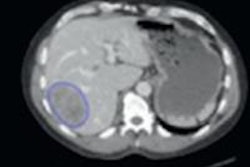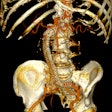Dear AuntMinnieEurope Member,
Field-strength issues continue to divide the global MRI community, it seems. Whereas 1.5-tesla scanners remain the clinical workhorse, 3-tesla and 7-tesla magnets have their supporters and are developing an important role in many applications.
Now, a leading expert on ultrahigh-field systems, Dr. Thoralf Niendorf from Berlin, has stirred the pot by expressing enthusiasm for 20-tesla scanners for human imaging. Find out more in our MRI Community, or click here.
A veil of secrecy has often surrounded child abuse, particularly in more conservative societies, so obtaining reliable data about imaging of child abuse is no easy task. For this reason, a survey presented at ECR 2015 was bound to generate great interest. The authors evaluated suspected cases of abuse at an inner city hospital between 2011 and 2013, and their findings deserve close scrutiny. Go to our Digital X-Ray Community, or click here.
Radiology in Bulgaria tends not to get massive attention, at least in the English-language literature, so a recent article about mammography in this fascinating country is most welcome. Click here to read more.
Meanwhile, prize-winning research from Tübingen, Germany, has provided new evidence that in many patients with coronary artery disease, late gadolinium enhancement cardiac MRI can depict previously unknown myocardial infarction. Get the story here.
This week we have another important news report from Germany. Carriers of Duchenne muscular dystrophy, even when asymptomatic, show severe cardiac abnormalities on MRI. Cardiac MRI showed that all asymptomatic carriers had significant cardiac pathologies, the researchers found. To learn more, click here.
Finally, if you missed last Thursday's article about the U.K. study on Hodgkin's lymphoma, make sure you click here.















